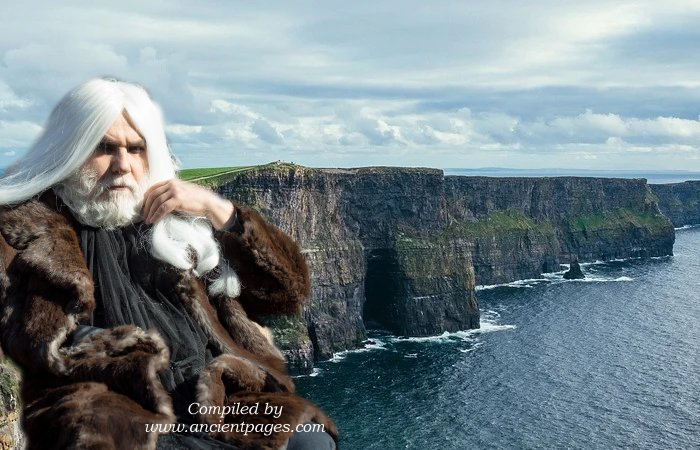Ellen Lloyd – AncientPages.com – One of the most intriguing personalities in Irish mythology is Fintan Mac Bochra, the first man in Ireland.
His relationship to the granddaughter of Biblical Noah and the story of how he escaped the Great Flood and traveled to the land of destiny known as ‘Inis Fail,’ meaning Ireland are fascinating accounts of the past.

According to Leabhar Gabhála (Book of Invasions, also called the “Book of Conquests”), Fintan Mac Bochra, also known as “the Wise,” was a seer who was married to Lady Cesair.
When Cesair was a young girl, only ten years, an Egyptian priest warned her of a coming catastrophe. He told her to gather a group of women and try to escape. Cesair built three arks and filled them with women who all possessed different skills.
Her father, Bith, came along with two other men, but they were not allowed to enter the ark unless they acknowledged Cesair as their leader. So, they did so, and they were brought to safety.
They sailed for seven years before reaching Ireland, which was unpopulated then. It was 2361 BC, according to ‘The Annals of the Four Masters, but only one ship had survived the epic journey, containing fifty women and three men. Among the survivors was Fintan Mac Bochra.
In the poem, Fintan describes how he survived the Flood when all others perished by hiding on the hill of Tounthinna over the River Shannon.
Upon arrival in Ireland, women were divided into three groups. Each group took one of the men to populate the new country that was now their homeland.
 The story of the Great Flood can be found among all ancient cultures. Credit: Public Domain
The story of the Great Flood can be found among all ancient cultures. Credit: Public Domain
Lady Cesair was together with Fintan Mac Bochra, and she became a great warrior woman. They also dived up the sheep they had brought with them. That’s the story of how the first sheep reached Ireland.
Shapeshifters are mentioned in many ancient Irish myths and legends, and the story of Fintan Mac Bochra is no exception.
Fintan Mac Bochra is credited with shape-shifting abilities, as in many Irish myths and legends. According to the ancient tales, he could transform himself into a one-eyed salmon, an eagle, and a hawk before resuming his shape. Yet, the most perplexing aspect of his story deals with his lifespan. Tradition has it that he lived for 5,000 years before he left the realm of humans.
His great age made him a sage man. He saw historical events of old Ireland, and he used his knowledge to advise the Kings of Ireland. He helped the Firbolg King Eochaid Mac Eirc when the Tuatha de Dannan attacked and fought in the first battle of Moytura. It was not until the advent of Saint Patrick and Christianity in Ireland that Fintan departed this mortal realm.
The legend of Fintan Mac Bochra sounds genuinely incredible, and it would be easy to dismiss it as a work of fiction. Still, we have seen many ancient myths contain vital historical pieces of truth.
Updated on September 1, 2022
Copyright © AncientPages.com All rights reserved. This material may not be published, broadcast, rewritten or redistributed in whole or part without the express written permission of AncientPages.com





